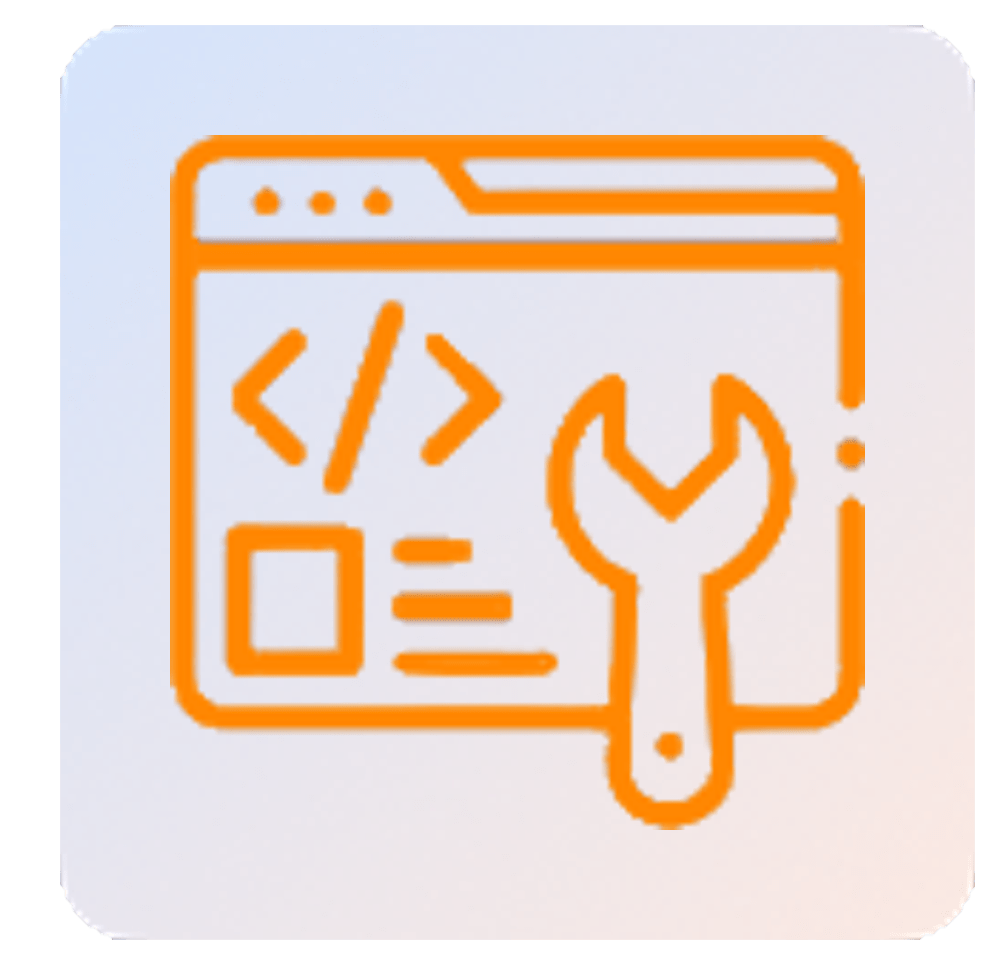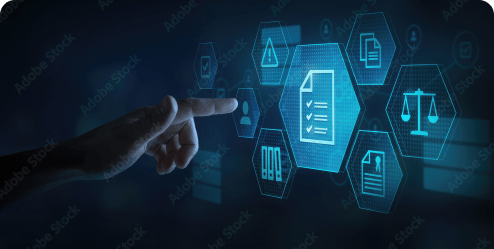IoT Gateway Development Services
Enterprise, Industry 4.0, Healthcare, Automotive
IoT gateway devices are the lifelines of many successful IoT applications in enterprise, Industry 4.0, healthcare and automotive domains.
In typical internet of things applications, IoT Gateway Devices are responsible for managing:
- IoT network device compatibility
- IoT security
- Configuration management of IoT devices
- Device to IoT cloud connectivity
…and more.
Our Customized IoT Gateway Development, Hardware Consulting & Testing Services

IoT Gateway Device & Sensor Nodes Communication
- IoT Gateway and interface development to enable communication with network(s) of multiple IoT sensors
- Expertise in integration with popularly deployed sensor nodes based on Zigbee, Bluetooth, LoRA, Zwave, 6LoWPAN and WiFi protocols

Secure Device Registration
Ensuring secured communication between the cloud and the IoT gateway through
- Device Authentication using SSL certificate
- Authentication using device MAC ID and key generation

IoT Gateway Software Development & Testing
- Device configuration management to facilitate communication between IoT Gateway, sensor nodes and IoT cloud server
- Support for firmware-over-the-air (FOTA) updates for IoT Gateway and Sensor Nodes network
- Message storing to manage lost connection - the fetched data is stored and sent again when the connection is retrieved
- Expertise in designing portable IoT software: Compatibility with various hardware platforms and OS
- IoT gateway device compatibility with major IoT communication protocols – Zigbee, BLE, EnOcean, LoRA, Modbus, Z-wave, 6LoWPAN
- Support for testing your industrial IoT gateway devices

IoT Hardware Design Consulting
- Participation in requirement gathering and analysis workshops
- IoT Architecture design and BOM cost optimization
- Schematic and Layout designing
- Signal Integrity Testing, Prototyping and Production support
- IoT PoC development for IoT gateway design evaluation /li>

Maintenance & Support Services for IoT Gateway Device
Ensuring secured communication between the cloud and the IoT gateway through
- Support for field testing and deployment
- Data collection, analysis, and performance tuning
- Bug fixing and support in making the production software more stable
Handbook: Design Best Practices for IoT Product Development Teams
Learn about hardware design best practices related to IoT Sensor
Nodes, Gateway, FOTA and necessary certifications
Handbook: Design Best Practices for IoT Product Development Teams
Learn about hardware design best practices related to IoT Sensor Nodes, Gateway, FOTA and necessary certifications

IoT Gateway and IoT Platform Development Projects: Best Practices
[IoT Gateway Video] ‘Off-the-Shelf’ v/s ‘Custom Built’ Solution: Our IoT Consultants Help You to Resolve this Dilemma
- Support for standard industrial network protocols such as ZigBee, IR, EnOcean, Modbus, Profinet.
- Compatibility with faster and data-efficient communication protocols such Wi-Fi, Ethernet, etc.
- Includes portable and adaptable IoT software code that is compatible with a wide range of hardware platforms and OS.
- Support for Over the Air (OTA) firmware and security updates.
- Can be connected to either a public cloud server or a hosted cloud server.
- Supports both horizontal and vertical scalability to meet the changing business needs.
- Is integrated with TPM (Trusted Platform Module) and TEE (Trusted Execution Environment) for hardware security (details about our IoT gateway security practice has been covered under a different question)
- Secure booting of the IoT system: For any device to run in a smooth and secure manner, its booting process must be reliable. This forms the foundation of the security of the IoT gateway system throughout its lifecycle.A secured process is necessary to ensure that the booting of the IoT gateway device is initiated only by trusted and authenticated software. Secure boot is very crucial to protect your IoT device against any Malware and Man in The Middle attack.The robustness of the system boot is ensured by:
- Checking the source of the boot: Each time the device is booted, the boot source is verified and authenticated using Secure Boot keys, which is unique for each boot module.
- Checking the content of the boot: This is to verify that device is being updated by the correct version of the boot and to ensure that only verified ad authenticated software is being booted in the IoT gateway device.
- Secure Data Communication between Sensor Nodes and Gateway: Usually, sensor communication protocols such as ZigBee, 6LoWPAN, Z-Wave, WiFi, LoRaWan and others have in-built strong security features to ensure reliable and secure data exchange between the sensor network and the IoT gateway.Additionally, we also encrypt the data from sensor nodes to IoT gateway, depending on your project requirements.
- Secure Data Communication with Cloud: All the data packets that are being exchanged from IoT sensors to IoT gateway and then IoT gateway to cloud servers are sufficiently encrypted. The security of the IoT gateway and cloud server communication is ensured through key management mechanisms and security certifications such as TLS or SSL.The IoT gateway devices (that are part of the network) are registered with the server and are given a unique MAC ID.When the server receives a connection request, it verifies this MAC ID by mapping it with the list of authenticated IoT gateway devices available in the server. Once the mapping is done, it checks for the security certifications of the IoT gateway devices to validate that the connection request is coming from an authenticated source.
Ans. In our IoT gateway development solutions, hardware security is ensured through Trusted Platform Module / TPM. A TPM offers an additional layer of security, over and above to the security modules discussed above.
TPM helps in ensuring hardware security through integrated cryptographic keys against data phishing attacks. We leverage the following benefits of the TPM for hardware security:
- Device authentication through TPM’s unique RSA key that is burned into it.
- Generate, store, and manage the use of cryptographic keys.
Ans. In order to efficiently manage Load Balancing, we create ‘mesh network topology’ of IoT Gateway devices and Sensor nodes.
Such a cluster of IoT gateway devices consists of multiple IoT Gateway systems interconnected with each other. This cluster of IoT Gateway devices is installed between a source node (IoT sensor) and destination node (cloud server).
When a device/system failure occurs, an IoT gateway transfers applications and device connections to the geographic neighbor Gateway, which is compatible with the desired connectivity protocol.
Ans. In order to ensure a continuous & reliable availability of system devices within an IoT network, we implement temporary data back-up technique.
If due to some reason, IoT gateway connectivity is lost, we store the data temporarily either in a memory or a disk. As and when the connection is restored, this stored data is pushed to the server. This helps in preventing any data loss during a connection failure.
Additionally, IoT gateway clustering also helps in preventing data loss during connectivity failure.
Ans. At Embitel, we provide support for the testing of the IoT gateway solution, before deploying it in the production environment.
Our IoT testing framework includes Unit testing, Integration testing, Functional testing, and System testing. Functional testing, and System testing. In addition to these, we also perform: Stress tests, Vibration tests and Heat Chamber testing depending on the deployment field and the customer’s use case requirement.
Our IoT Consultants will partner with your teams to create a comprehensive test plan for your IoT gateway project.
Ans. We have successfully helped many of our customers, from varied industry segments, in developing scalable and intelligent IoT applications. We have helped them in revamping their legacy industrial automation systems, enabling them to save operational costs in the process.
We will first understand and analyze your industrial automation set up and create an IoT solution roadmap that is most compatible with your existing systems. We will design communication interface cards (between sensor device to gateway & gateway to cloud) that can communicate with your industrial assets and collect crucial information.
This information, via IoT gateway device, will be sent securely to an authenticated IoT cloud server for data processing and analysis.
At all levels, stringent security measures are implemented to ensure safety of data . Thus your critical enterprise data can be remotely accessed and managed with the help of a secure IoT network.
Customer Success Stories in IoT Gateway Platform, SCADA and Battery Management System

IoT Platform & SCADA Solution for Solar Tracking System
Our client, an Indian Subsidiary of one of the Global Pioneers in Renewable Energy generation, was seeking a solution to improve the efficiency of their existing solar power plant.
Embitel Solution:
Our IoT team developed a solution (hardware and software) for a solar tracking system, along with a SCADA system for monitoring the status of the solar trackers. Our platform helped in reducing the cost of field operations while also increasing the field coverage.

IoT Control Room Gateway Development for Solar Tracking System
Our customer is a leader in the renewable energy sector. They had already collaborated with us for the development of an IoT based solar tracking solution. They wanted to custom-develop a control room gateway device to replace their old device, so that they can reduce the cost and complexity of the system.
Embitel Solution:
- Custom development of Control Room Gateway Device hardware and peripherals
- Development of software modules to support Modbus communication, I/O module and analog communication between the Control room gateway device and other systems
- Redesign and custom development of HMI and SCADA systems

Industrial loT Solution for UPS Battery Monitoring System
Our customer is a supplier of industrial automation solutions. They were facing difficulties in mitigating their industrial UPS system downtime and lowering the cost of ownership to their clients.
Embitel Solution:
- Design and development of an IoT solution using industrial grade network of sensors for data collection and battery monitoring for UPS
- Design and development of a data aggregator and storage system
Our client now has the ability to ensure zero system downtime, as our solution was based on predictive maintenance.
IoT Gateway Development Blogs: Hardware Design Guide, How IoT Gateway Works and More
- What is an IoT Gateway Device and Why is it so Important for the Success of IoT Projects?
- How an IoT Gateway Device Works: Understanding the Architecture
- 6 IoT Gateway Development Best Practices for Your Industrial Automation Project
- Hardware Design Guide for IoT Projects (Part I): IoT Sensor Nodes and Gateway Devices
- 8 IoT Design Mistakes You Should Avoid for a Successful IoT Solution Development Project
- Hardware Design Guide for IoT Projects (Part II): Security, FOTA & Regulatory Compliance
- Cloud, Edge or Hybrid IoT Solutions: Which Computing Model is Best Suited for your IoT Application?
Knowledge bytes
- What are Zigbee Gateway devices?
Zigbee is a popular open communication protocol for wireless devices. A Zigbee gateway device enables data connection between IoT Sensors and devices within a Zigbee network.
A Zigbee gateway basically offers a universal channel to connect Zigbee-based IoT Sensors, devices and systems to IP-based networks.
Some popular use-cases of Zigbee Gateway include home automation, automated energy management solutions, healthcare monitoring systems and more.
- What are some of the most commonly deployed IoT wireless communication protocols?
- ZigBEE,
- Modbus Protocol,
- Bluetooth Low Energy (BLE),
- EnOcean,
- Z-wave
- 6LoWPAN
- Cellular 2G/3G/4G/5G
- LoRa and LoRaWAN
- Sigfox
- Zigbee: It is based on IEEE 802.15.4 standard. Zigbee is a is a low-power, low data rate wireless communication protocol used for applications that requires low-bandwidth data transfer.
- Modbus: The Modbus protocol is one of the most commonly used communication protocol for industrial automation applications such as SCADA. Modbus is an open-source, flexible protocol that is based on serial communication.
- BLE: Bluetooth Low Energy ( BLE) is a wireless personal area network technology designed especially for applications that required low power consumption.Like its classic predecessor ( Bluetooth) , BLE uses 2.4 GHz radio frequencies and also permits dual mode systems to use a common radio antenna.
- Enocean: Developed and maintained by Enocean Alliance, this is the only wireless standard based on energy harvesting technology. Enocean standard is mainly used for energy-efficient building automation solutions.
- Z-wave: Z-wave is a wireless standard that uses low-energy radio waves to establish connection with the devices. One of the striking features of the Z-wave protocol is its interoperability at the application layer. This helps various Z-wave based hardware and software to smoothly operate together.
- 6LoWPAN (IPv6 over Low-Power Wireless Personal Area Networks): 6LoWPAN is a standard protocol for establishing IPv6 communication on wireless networks with low-power modules. Every node in the network has its own IPv6 address. 6LoWPAN facilitates Internet Protocol to be enabled on even the smallest of low-power devices. Such devices with limited processing capabilities can, hence, be part of an IoT ecosystem.
- Cellular 2G/3G/4G/5G: 2G, 3G, 4G and 5G are cellular mobile communication protocols that make long-range communication possible in an IoT infrastructure. Amongst the various cellular communication protocols for IoT, 5G offers several advantages. This includes high data rate, reduced latency, reduction in cost, reliability and greater system capacity.
- LoRa and LoRaWAN: These are communication protocols that enable extremely long-range connectivity. LoRa based communication requires very low power and hence, can be deployed in devices that run on batteries for many years, across a wide network. LoRaWAN is a protocol that can be used in a large network of devices with low power requirements and low data rates. The main difference between the two is that LoRa is just a radiofrequency signal that contains the PHY layer protocol, while LoRaWAN is the technology that connects LoRa signal to the application (and hence, consists of the data transfer layer as well).
- Sigfox: Sigfox is a wireless communication protocol that enables low power, long range, low data rate connectivity between IoT devices, actuators and sensors. Hence, this is widely used in telematics applications, remote monitoring and control of field-deployed devices and mHealth applications. The SigFox network offers a scalable, high-capacity system that consumes minimal energy and uses very narrow bandwidths.
- What is an IoT platform?
In simplest terms, an IoT platform is a multi-layer solution offering a seamless connection between remote hardware (IoT Gateway devices and IoT sensors) and a web-based cloud.
An IoT Platform also facilitates a host of other functions such as multi-level security, data aggregation , processing and analysis.
An IoT platform is often perceived as a set of built-in tools that enables the above functions for the development of a scalable and cost-efficient Internet of Things (IoT) ecosystem.






